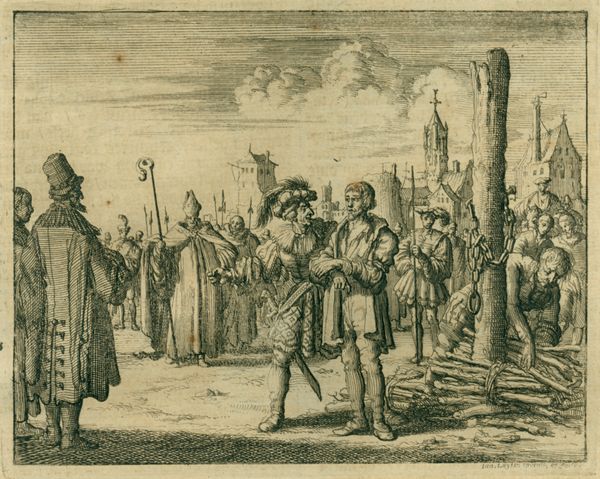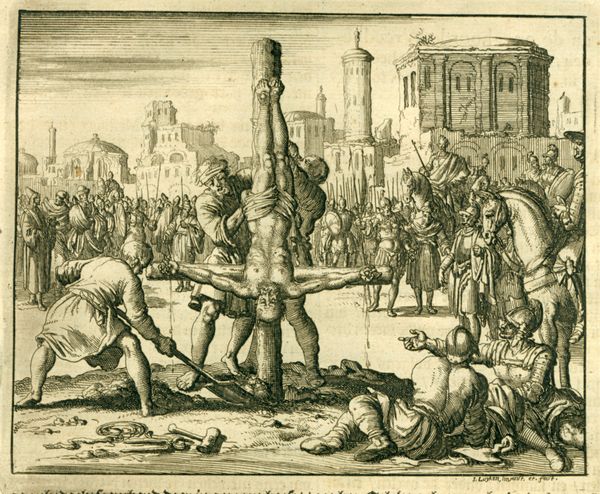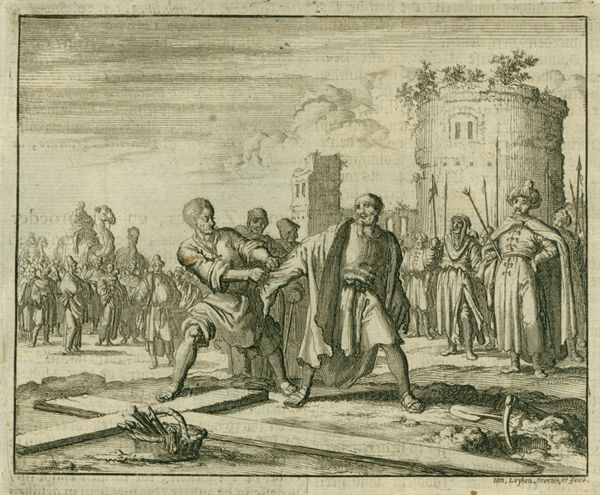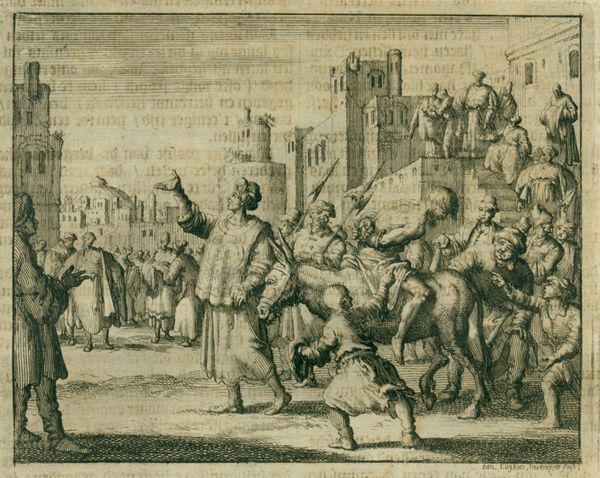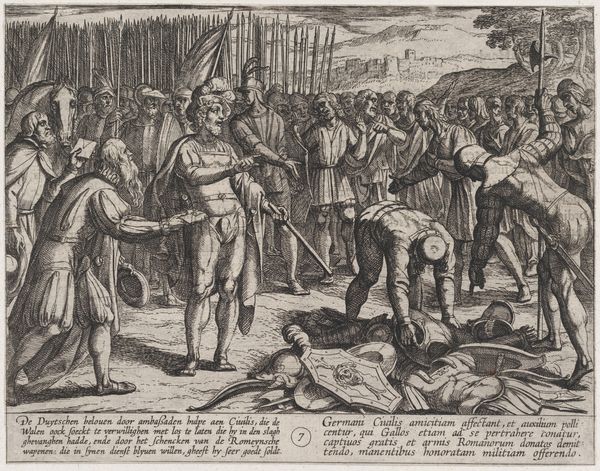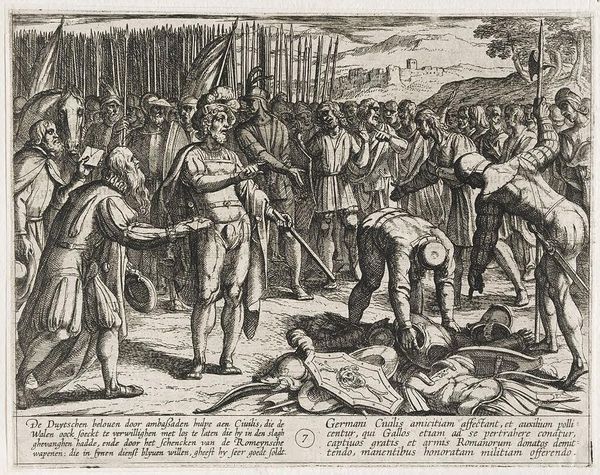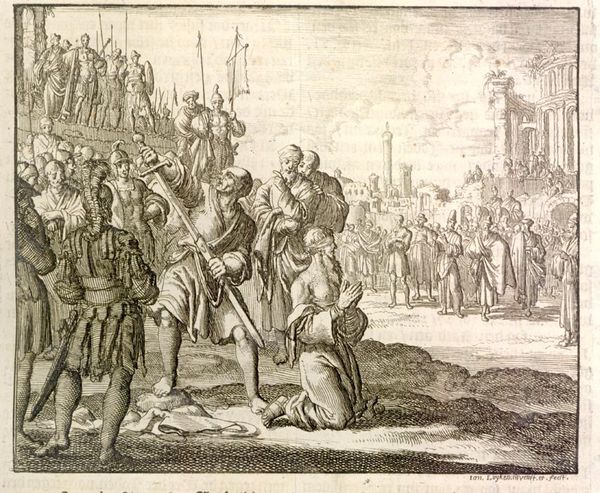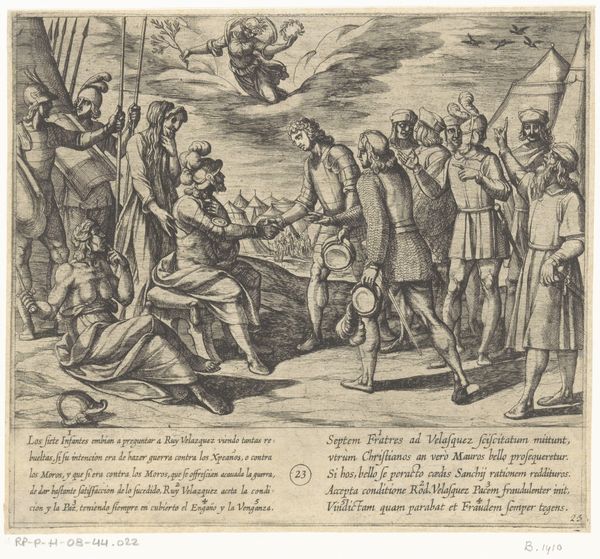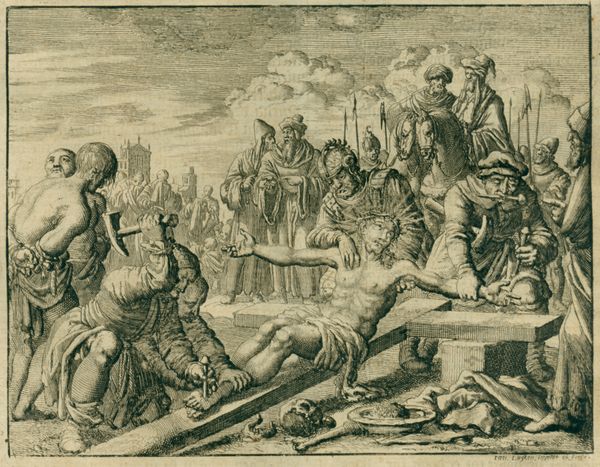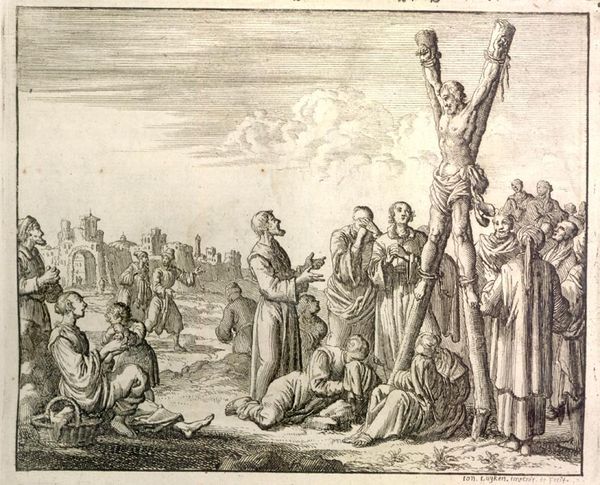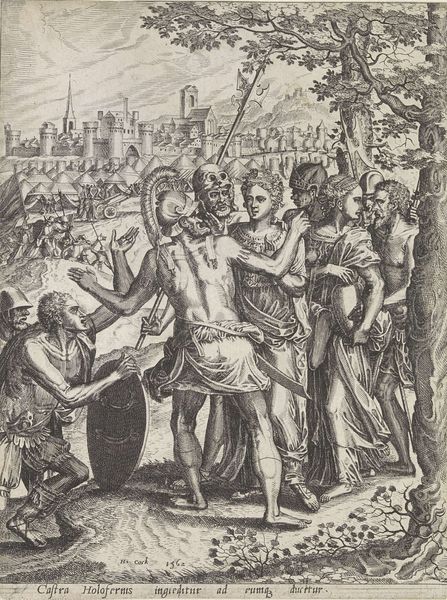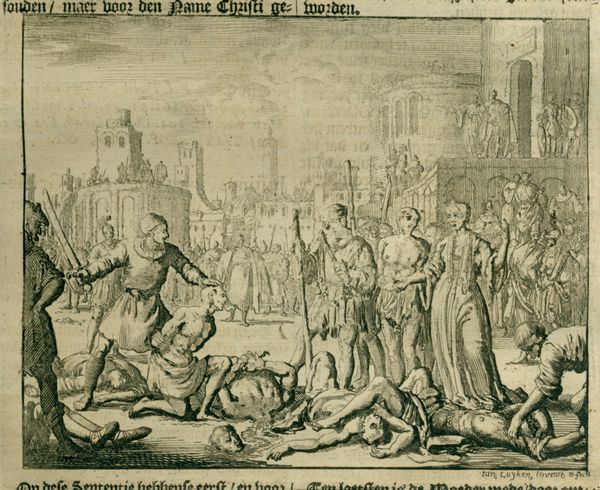
print, engraving
#
narrative-art
#
baroque
# print
#
figuration
#
history-painting
#
engraving
Copyright: Public domain
Editor: This is Jan Luyken's engraving, "Apostle Bartholomew Skinned Alive and Beheaded, Armenia, AD 70," created in 1685. The detail is astounding, considering the medium. It's also rather gruesome. What draws your eye in this print? Curator: Immediately, I’m struck by the material realities embedded within the image. Luyken's choice of engraving allows for the stark depiction of violence as labor. Consider the tools of the executioner - the knife, the axe on the ground. They speak volumes about the process of production, not just of the artwork, but of this horrific act. The engraving becomes a material witness to social and political control. Editor: So, the process of *making* the print mirrors the depicted act? That's…intense. Curator: Precisely. Look at the way the lines create texture, simulating flayed skin. This is not merely an image of suffering, but an engagement with the material consequences of power. The artist makes choices, controls the means to tell a very complex story. It makes you think about the availability of cheap printing for wide distribution and propaganda at the time. Editor: I never thought of it that way. I was focused on the horror of the event. But considering the materials – the plate, the ink, the press – and the labour… Curator: Exactly. The distribution of printed material made the word more easily available. Also consider where the money for Luyken’s tools come from. How the church funds this art with power and capital! Editor: Seeing it as a form of production, a deliberate construction using tools and labor… It's completely changed how I view the image. Curator: Right? It allows us to question whose stories get told, and how those stories are materialized and circulated.
Comments
No comments
Be the first to comment and join the conversation on the ultimate creative platform.
